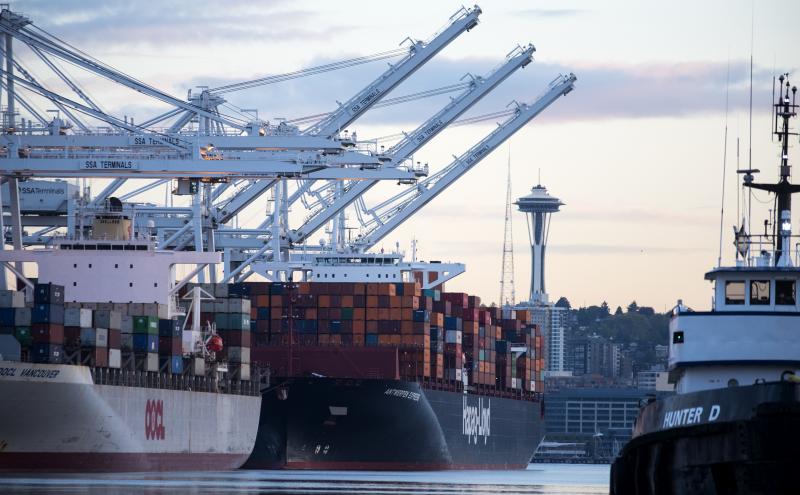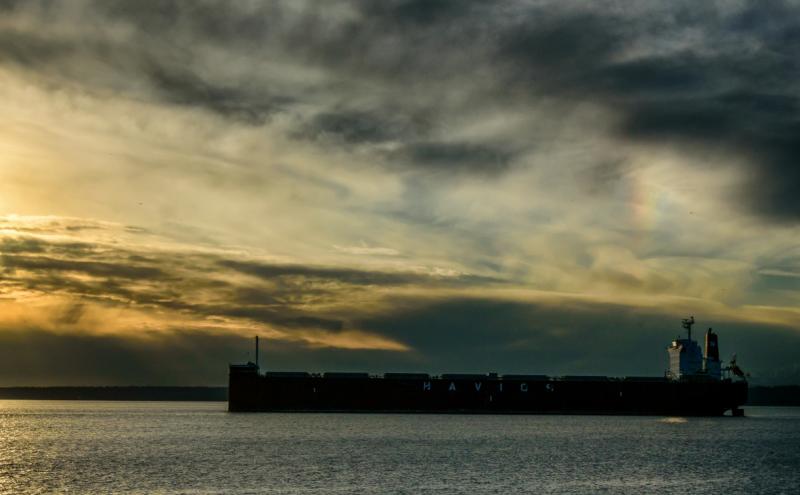
In 2014, the Port of Seattle and the Port of Tacoma Commissioners announced a vision for the two ports to form an alliance. Why? Instead of competing against each other, the two ports could come together on a regional level to better compete on a global scale. After public outreach and approval from the Federal Maritime Commission, the alliance officially formed August 5, 2015. This year, The Northwest Seaport Alliance (NWSA or alliance) will turn seven!
The climate
Before the alliance was formed, both ports were facing fierce competition from other ports in North America. Shipping line alliances were reforming to partner with carriers of similar-sized vessels. In addition, as vessels got larger, they would call at fewer ports. With the formation of the alliance, the ports would work together — rather than competing — on financially sustainable business models that ensured the ability to reinvest in terminal assets and infrastructure for the greater good of the region.
From one employee’s perspective
I began my career at the Port of Seattle in 1996. Along the way, different ideas of how the Ports of Seattle and Tacoma could collaborate constantly floated around. In 2014, grumblings about joining forces became louder and a lot of rumors and speculation about how it would look began to circulate. It is fair to say that people do not like uncertainty. When things are unknown, people create narratives. I was hearing water-cooler rumors ranging from a full merger of all assets from both ports to the ports informally working together to market the region.
It became apparent that something was going to happen, and we were just waiting for some sort of announcement to be made. It began with an email. Certain teams were invited to a meeting with then Port of Seattle CEO Ted Fick. Ted told us about the alliance and what he knew at that time. There were a lot of questions and a lot of unknowns. Anyone who has faced a merger, acquisition, or downsizing, can attest that the unknown can generate anxiety.
There were practical questions like:
- Where will the office be? I live in Seattle; will I have to commute to Tacoma?
- Will my health benefits change?
- Will my vacation days change?
- Will there be layoffs?
- Seattle and Tacoma staff had engaged in “friendly competition” for years. How would we transition to become one team and build trust with one another?
- Different organizations have different cultures, so what would the culture of the new organization be?
I had some consternation as I navigated change until I eventually reached acceptance as the core team came together. I never thought the idea was bad — because Seattle and Tacoma working together for the good of the region is more logical than competing with one another — but I was being thrust into a newly formed entity and an unknown organization.
Becoming the Alliance
On August 5, 2015, I was no longer a Port of Seattle employee. I was “alliance.” In some ways, it felt like being placed on a spaceship to form a colony on the moon. We were entering into unknown territory and would be building an organization from scratch for the future. The idea of the alliance was a great idea, but the actual execution would take work.
The potential that came with the launch of the alliance is ever-present and the exciting work is ongoing. Seattle and Tacoma came together to create a strategy for the region, including making strategic investments. This is evident in recent projects at Terminal 5 in the Seattle Harbor and Husky Terminal in the Tacoma Harbor.
One of the most enjoyable developments from the formation of the alliance is working with new people. The employees from both harbors are hard working, knowledgeable, and driven people who excel in their respective fields.
One of the most important results of the alliance is that the organization can be strategic and nimble. And more importantly, can focus on growing the region by joining forces to compete against other ports.
Why does it matter?
As mentioned earlier, working together is more logical than competing with each other. With the formation of the alliance, we can focus on growing the region together and work together to compete for cargo to and from key battleground states.
The Port of Seattle and Port of Tacoma are important economic drivers for our region. An economic impact study released in 2019 highlighted marine cargo operations in our harbors: supported 58,400 jobs, produced over $4 billion in labor income, and contributed almost $12.4 billion in business output. Our state is trade dependent with 40% of the jobs tied to trade.
Additionally, Washington state’s 35,500 farms produce over 300 commodities, and Washington state is the top U.S. producer of apples, blueberries, hops, pears, spearmint oil, and sweet cherries. Products that are not consumed domestically are exported via ports, with the NWSA being a gateway of choice.
In the end
Together we are stronger!
Quick facts
- The NWSA is the leading export gateway for Hay and Forage; Frozen Potato Products; Apples; Legumes (Peas, Beans, and Lentils); Fresh Potatoes; Grass Feed; Hops and Hop Extract; Pears, Quinces; and Sweet Cherries
- The NWSA was the fourth largest container gateway by twenty-foot equivalent units (TEUs) in 2021 in North America
- The NWSA handled 3.7 million TEUs in 2021, ranking number 47 globally
- Although the majority of this cargo was international, 744,000 TEUs were shipped domestically to and from Alaska and Hawaii
- Our domestic terminals handle more than 80% of containerized shipments between Alaska and the lower 48 states
- International container carriers provide regular weekly services to key markets in Asia, Europe, Central and South America, and Oceania
- Regularly scheduled liner services connect cargo to direct international ports of call
- Four domestic carriers provide regular weekly services to Alaska and Hawaii
Other reading
Leadership
Both ports are governed by five commissioners who are elected by citizens of their respective counties. Commissioners serve four-year terms, and they establish policy for their respective port. The ten commissioners form the Managing Members of the NWSA, with the president of each home port serving as the co-chairs. John Wolfe is the CEO.
About
The NWSA is a marine cargo operating partnership of the Port of Seattle and Port of Tacoma. Under a port development authority, the NWSA manages the container, breakbulk, auto, and some bulk terminals in Seattle and Tacoma.








